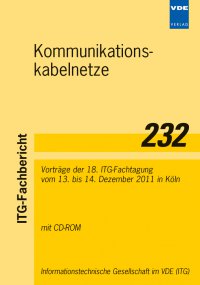Smart Optical Fibre Infrastructure
Conference: Kommunikationskabelnetze - 18. ITG-Fachtagung
12/13/2011 - 12/14/2011 at Köln, Deutschland
Proceedings: Kommunikationskabelnetze
Pages: 6Language: englishTyp: PDF
Personal VDE Members are entitled to a 10% discount on this title
Authors:
Fromenteau, Jean-Marie; Diaz, Vanesa G. (Corning Optical Fiber, Corning Limited, Lakeside Business Village, St David’s Park, Ewloe, Flintshire CH5 3XD, UK)
Abstract:
Optical fibre is the foundation of any optical network and so it is essential that the fibre deployed has the performance and capability required to overcome the challenges inherent to each scenario. Optical fibres offering an improved OSNR (Optical Signal Noise Ratio) through a low attenuation coefficient together with a very low PMD (Polarization Mode Dispersion) are certainly the preferred fibres to be deployed in terrestrial long-haul and metro networks because they provide a cost-effective solution to transport very high data rates (40Gb/s, 100Gb/s). Submarine networks, where design is not confined by ITU-T standards, may achieve further OSNR benefit from low attenuation, low PMD fibres with larger effective areas. But in the outside plant of Next Generation Access Networks, there is a wide variety of technological challenges and a myriad of coexisting solutions that naturally raise the question as to the preferred or most optimized fibre to deploy. In this paper we examine both the challenges and trends that operators are facing in their access networks, exploring the attributes of the optical fibre that matter the most in the outside plant of Access Networks in terms of enabling a flexible and robust infrastructure capable of providing subscribers today with the broadband of the future.


